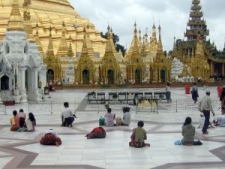Interesting Facts About The Burmese Language

Posted on January 21, 2015 by Chris
The Burmese language, also known as Myanmar language or myanma bhasa, is the official language of Myanmar.
Burma or Republic of the Union of Myanmar is a Southeast Asian country surrounded by India and Bangladesh to its west, China and Laos to its east, Thailand and Bay of Bengal to its south. Burmese is spoken by the Burmese people, various ethnic groups of the country around the world and in some parts of Southeast Asia including Thailand, Malaysia and Singapore.
Here are some interesting facts about the Burmese language.
- Burmese was the native language of Bamar and various sub-ethnic groups including the minorities like Mon.
- There are presently 32 million people (approx) who can speak and write Burmese as their first language. There is an additional 10 million Burmese speakers as their second language. There are more who know Burmese and might be able to write as well. This makes Burmese a more oft spoken language than Dutch, Greek, Ukrainian, Kannada, Malayalam and Swedish. Although there is more interest in studying Greek or Dutch than Burmese, still that doesn’t add much to the number of people speaking those languages.
- Burmese would appear to be a strange language to most people, especially those who speak one of the Indo-European or Euro-Asiatic languages. Burmese has a quaint pitch register, tonal and syllable timed form as a language. The language is uniquely monosyllabic. Most words in the dictionary of Burmese language are either of just one syllable or they have an analytical implication.
- There is also a very precise order to wording and sentence construction. The grammatical norm of a subject followed by the object and then the verb is very stringent and it is not readily found in most languages spoken around the world.
- Burmese hails from the Sino-Tibetan family of languages and it has a Brahmic script. The same is also known as the Burmese script. However, the language has no connection to the Indo-Tibetan language such as Sanskrit which is known as Tibetan Sanskrit across the Himalayas from India. The Brahmic script finds use in many languages but Burmese doesn’t share any connection to those either.
- The use of Burmese language in naming people is also quaint. There are no last names, which does away with any familial relevance in a name. Often, names would be rhymed and would use two words, such as Mo Mo or Ming Ming. At times, general words in Burmese language would also be used as names such as little boy or Lugal Nghe, U Nghe or big boy.




